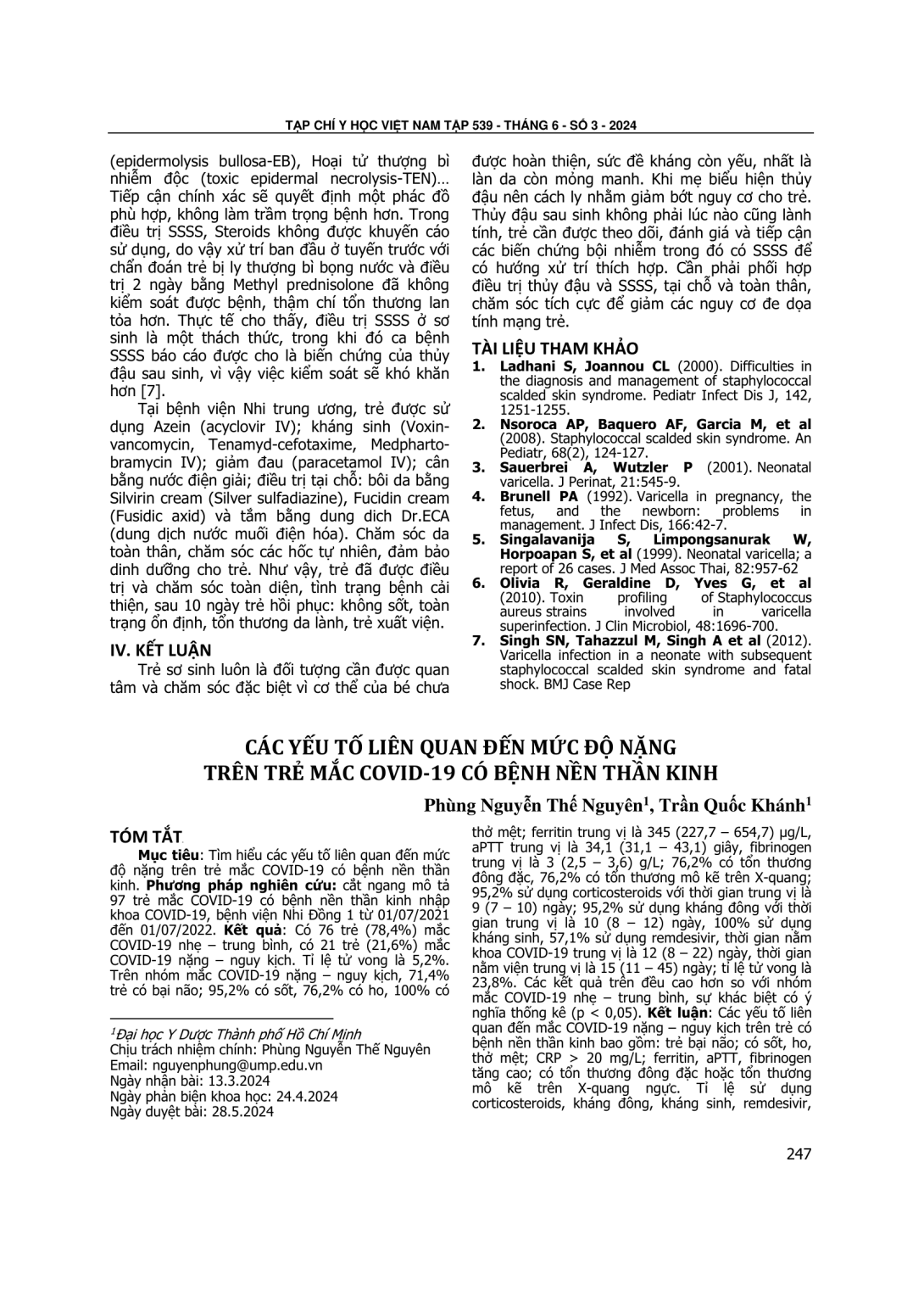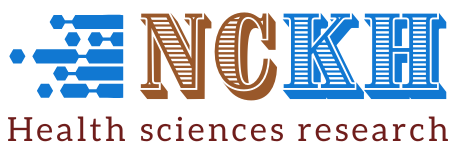
Tìm hiểu các yếu tố liên quan đến mức độ nặng trên trẻ mắc COVID-19 có bệnh nền thần kinh. Phương pháp nghiên cứu: cắt ngang mô tả 97 trẻ mắc COVID-19 có bệnh nền thần kinh nhập khoa COVID-19, bệnh viện Nhi Đồng 1 từ 01/07/2021 đến 01/07/2022. Kết quả: Có 76 trẻ (78,4%) mắc COVID-19 nhẹ – trung bình, có 21 trẻ (21,6%) mắc COVID-19 nặng – nguy kịch. Tỉ lệ tử vong là 5,2%. Trên nhóm mắc COVID-19 nặng – nguy kịch, 71,4% trẻ có bại não; 95,2% có sốt, 76,2% có ho, 100% có Tìm hiểu các yếu tố liên quan đến mức độ nặng trên trẻ mắc COVID-19 có bệnh nền thần kinh. Phương pháp nghiên cứu: cắt ngang mô tả 97 trẻ mắc COVID-19 có bệnh nền thần kinh nhập khoa COVID-19, bệnh viện Nhi Đồng 1 từ 01/07/2021 đến 01/07/2022. Kết quả: Có 76 trẻ (78,4%) mắc COVID-19 nhẹ – trung bình, có 21 trẻ (21,6%) mắc COVID-19 nặng – nguy kịch. Tỉ lệ tử vong là 5,2%. Trên nhóm mắc COVID-19 nặng – nguy kịch, 71,4% trẻ có bại não; 95,2% có sốt, 76,2% có ho, 100% có thời gian nằm viện và tỉ lệ tử vong của nhóm nặng – nguy kịch đều cao hơn nhóm nhẹ – trung bình.
To investigate factors related to the severity of COVID-19 in children with underlying neurological conditions. Methods: A cross-sectional study was carried 97 children with COVID-19 and underlying neurological conditions admitted to the COVID-19 department at Hospital Children 1 from July 1st 2021 to July 1st 2022. Results: There were 76 children (78,4%) with mild to moderate COVID-19, while 21 children (21,6%) experienced severe to critical illness. The mortality rate was 5,2%. Among the severe to critical COVID-19 cases, 71,4% had cerebral palsy, 95,2% presented with fever, 76,2% exhibited cough and 100% experienced respiratory distress. The median ferritin level was 345 (227,7 – 654,7) μg/L, median activated partial thromboplastin time was 34,1 (31,1 – 43,1) s, and median fibrinogen was 3 (2,5 – 3,6) g/L. Additionally, 76,2% showed consolidation on chest X-ray, and 76,2% had interstitial lung pattern. Corticosteroids were used by 95,2% of patients for a median duration of 9 (7 – 10) days, while 95,2% received anticoagulants for a median duration of 10 (8 – 12) days. All patients received antibiotics, and 57,1% were administered remdesivir. The median length of hospital stay for COVID-19 department admission was 12 (8 – 22) days, and for overall hospitalization, it was 15 (11 – 45) days. The mortality rate of the severe to critical COVID-19 group was 23,8%. All these results were significantly higher compared to the mild to moderate COVID-19 group, with statistical significance (p < 0,05). Conclusions: The severity of COVID-19 in children with underlying neurological conditions is associated with several factors: cerebral palsy, fever, cough, respiratory distress, CRP > 20 mg/L, elevated levels of ferritin, aPTT, and fibrinogen, as well as consolidation or interstitial lung pattern on chest Xray. The utilization rates of corticosteroids, anticoagulants, antibiotics, remdesivir, length of hospital stay, and mortality rates are all higher in the severe-critical group compared to the mild-moderate group.
- Đăng nhập để gửi ý kiến
